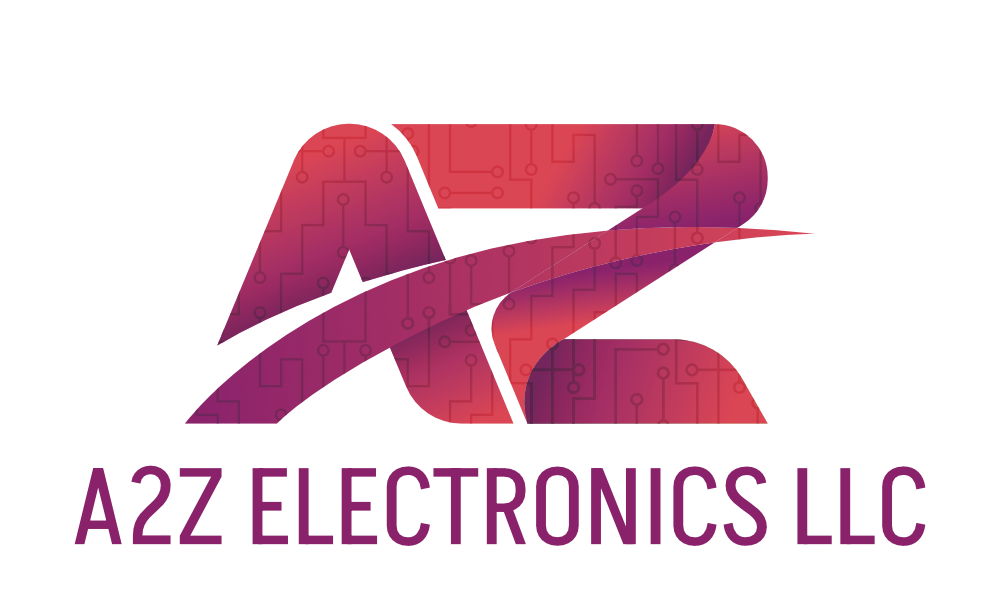How to Select the Right Electronic Components for Your Design
- hshah722
- Dec 23, 2024
- 4 min read
Updated: Feb 13

Imagine standing in front of a massive toolbox filled with countless tiny parts, each with its own unique role—it’s both exciting and a little daunting, right? That’s exactly what it feels like when diving into the world of electronic components.
Whether you're a seasoned engineer refining your next masterpiece or a curious hobbyist starting from scratch, choosing the right electrical and electronic components is the key to success.
In this guide, we’ll break down everything you need to know, from understanding the basics to mastering advanced selection strategies, so you can tackle your projects with confidence and creativity. Let’s get started!
What Are Electronic Components and Their Roles in a Circuit?

In simple terms, electronic components are the building blocks of modern technology. They play essential roles in circuits, transforming electrical energy into desired outputs. Whether it’s amplifying a signal, rectifying an AC current, or simply resisting electrical flow, every component serves a specific purpose.
For example:
Resistors control current flow and divide voltages.
Capacitors store and release energy, providing stability in circuits.
Transistors can function either as switches or amplifiers in electronic devices.
If these components don't work in harmony, optimal performance cannot be achieved. Understanding their roles is the first step in ensuring your design is effective.
Types of Electronic Components
To make informed decisions, it's essential to know the type of electronic components available. There are two groups of components:
a. Active Components
These include semiconductors like transistors and diodes.
Active components require external power to function and often control current or voltage in a circuit.
b. Passive Components
Examples include resistors, capacitors, and inductors.
They don’t require external power and rely solely on the flow of current through them.
Beyond these, there are specialized components such as sensors, microcontrollers, and oscillators, tailored to specific applications. Selecting the right type depends largely on the requirements of your project.
Understanding the Functions of Electronic Components
Knowing electronic components and their functions is crucial for crafting reliable and efficient designs. Let’s delve into some common components:
Diodes: Ensure current flows in one direction, vital in rectifiers and voltage regulation circuits.
Integrated Circuits (ICs): Perform multiple functions like processing, amplification, and switching in compact forms.
Inductors: Store energy in magnetic fields, commonly used in filters and transformers.
Each component’s function dictates its role in your circuit. For instance, a power supply design requires capacitors to smooth voltage and diodes for rectification, while a communication circuit might demand high-frequency oscillators and transistors.
Applications of Electronic Components
The versatility of electronic components applications is astounding. From simple household appliances to advanced aerospace technology, these components are omnipresent.
Key application areas include:
Consumer Electronics: Smartphones, televisions, and gaming consoles rely on transistors, resistors, and microcontrollers.
Automotive: Automotive such as Modern vehicles incorporate electronic components for navigation systems, sensors, and automated braking.
Healthcare: Equipment like MRI machines and pacemakers depend on precision electronic components.
Industrial Automation: Factories use sensors and controllers to enhance productivity and safety.
Understanding these applications can guide you in selecting components that match your design’s end-use requirements.
5 Steps to Choose the Right Electronic Components for Your Design?

Choosing the right components can be daunting, but following a structured approach can simplify the process. Here’s a step-by-step guide to aid in selection component decisions:
Define Requirements
Start with a clear understanding of your circuit’s purpose and performance expectations.
Review Specifications
Look at voltage, current, power ratings, and other technical details.
Evaluate Compatibility
Ensure the component integrates seamlessly with other parts of the circuit.
Check Availability
Opt for components that are readily available and unlikely to become obsolete.
Test Reliability
Choose components from reputable manufacturers with proven reliability in similar applications.
By following these steps, you’ll minimize errors and maximize your design’s success.
Factors to Consider When Selecting Electronic Components
When selecting electronic components, the following factors are critical:
Environmental Conditions
Will your design face extreme temperatures, humidity, or vibrations? Choose components rated for such conditions.
Cost vs. Performance
Strike a balance between affordability and the component's performance to avoid over-engineering or cutting corners.
Power Requirements
Match the power capabilities of components to your circuit’s needs to prevent failures.
Regulatory Compliance
Ensure components meet industry standards and certifications, especially for safety-critical applications.
Future Scalability
Consider whether the component supports potential upgrades or expansions in functionality.
Advanced Tips for Component Selection
For those working on complex designs, these advanced selection component tips can enhance performance:
Leverage Simulation Tools
Use software like SPICE to simulate circuit behaviour before committing to components.
Opt for Multi-Functional Components
Where possible, use ICs or other multi-functional components to reduce circuit complexity.
Verify Supplier Reliability
Partner with trustworthy suppliers to avoid counterfeit or substandard components.
Test Prototypes
Build and test prototypes early to identify potential component issues.
Stay Updated
Follow industry trends and advancements to incorporate the latest technology in your designs.
A2ZEMS, for instance, provides high-quality components and expertise to help you stay ahead of the curve.
Takeaway
Selecting the right electronic components for your design doesn’t have to be overwhelming. By understanding the roles, types, and functions of components, as well as considering application-specific requirements, you can confidently create reliable and efficient designs.
At A2ZEMS, we are committed to providing a wide range of top-quality electronic components to support your projects. Whether you're designing for consumer electronics, automotive, healthcare, for industrial automation, our expertise and inventory can help you succeed. Connect with us today for electronic components needs.
Don’t let the wrong components hold you back! Browse A2ZEMS’ wide range of high-quality electronic components today and take the first step toward building your next breakthrough.


Comments